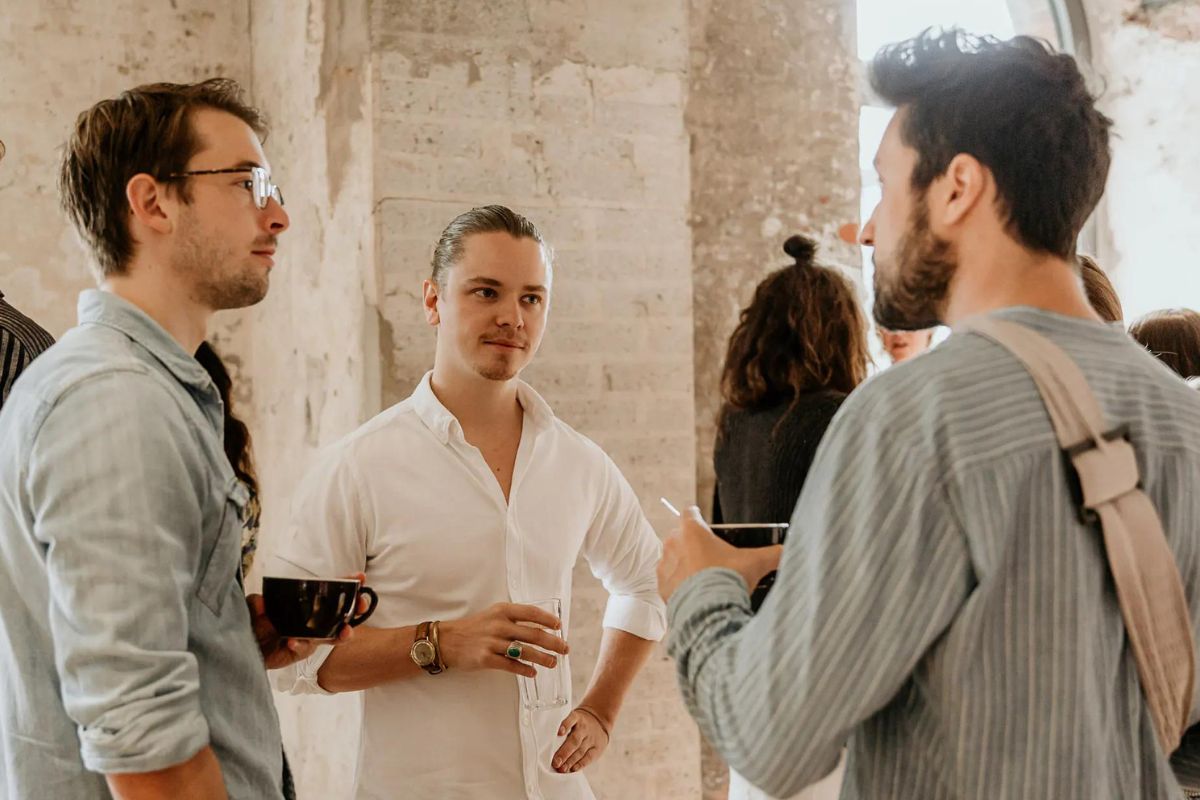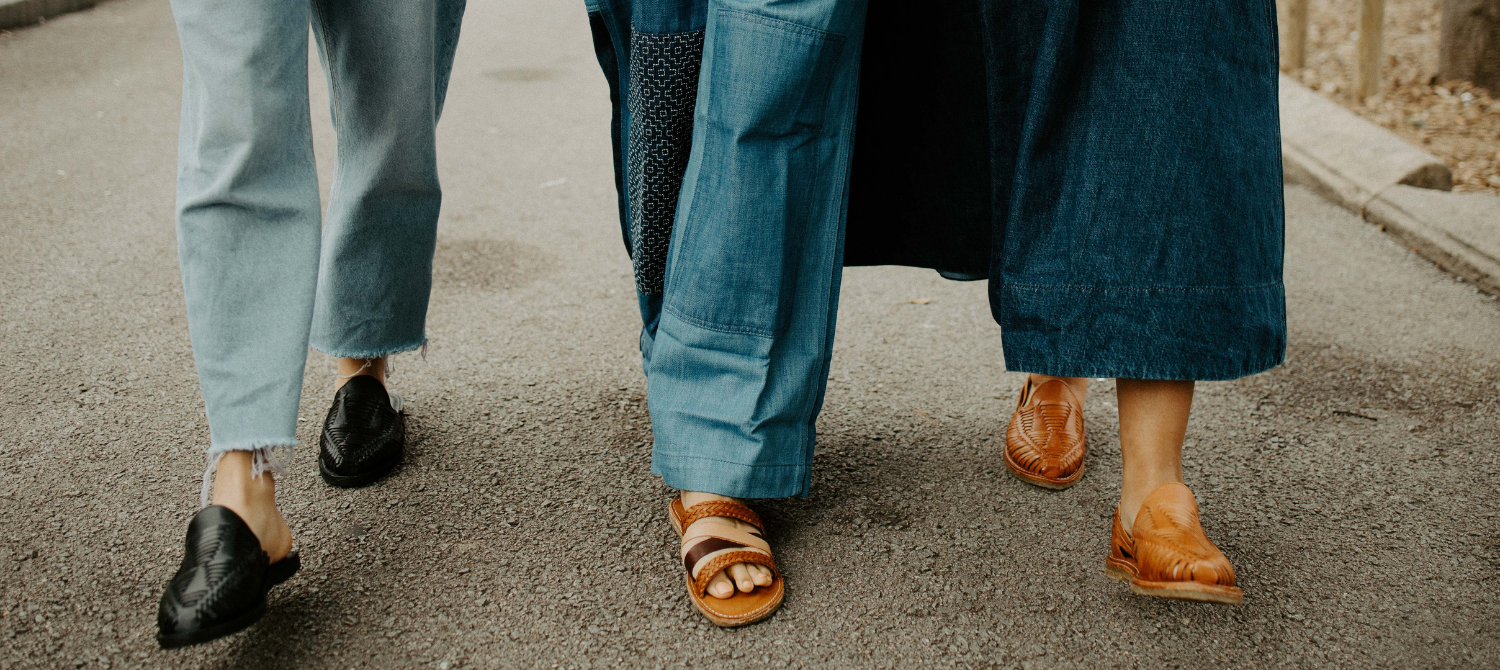Starting a fashion brand is not easy. Especially if you want to build a sustainable business in another country where you have to deal with cultural differences too. But CANO's co-founder Philipp did it. In this interview he tells about the journey of CANO; how he got to know the Mexican huarache, got the idea for the company, and eventually succeeded.

The story of CANO | An interview with co-founder Philipp
Could you tell me the story of how CANO started?
How it all started... So I used to live in Mexico in 2014 while I was studying International Business in Venlo in the Netherlands. I was lucky enough to do an exchange project in Guadalajara. That was my fifth semester in university. I went there with the initial idea of just going there one semester, and then doing an internship in the US afterwards in the second half of 2014. But I got to Mexico and I actually fell in love. While I was there I was like ''Well, I really really like it here. I don't want to go to the US for an internship anymore. I would rather find an internship in Mexico.'' I looked for a couple of options and then I did an internship position at a marketing agency in Guadalajara. So I stayed for another six months, from January 2014 to February 2015 - a little over a year.
While I was in Mexico, those huaraches were literally everywhere, on every street market. But it was only at Christmas in 2014 when my then-girlfriend gifted me three pairs of huaraches. In Mexico they're fairly cheap but also very poor quality. They're only around 20 dollars, but you can also only wear them for like 4 weeks and then they are completely worn off and you have to trash them. She gifted me these huaraches and I absolutely loved them. Coming back to Germany, I thought ''Wow, this is actually a really cool shoe for men is summer''. Because what can we wear in summer? Flipflops, Birkenstocks, sandals, moccasins - all not really my thing... There are very few options for men, whereas for women there are thousand different options for sandals. That was the idea initially; to bring them to Europe as a cool alternative for men in summer. So back then I actually already looked for some suppliers online and ordered a couple of sandals. But I was still studying and I didn't really have the financial means to start a shoe brand back then. So I stopped with pursuing that idea.
Philipp in Michoacán
How did you get back to this idea of selling huaraches in Europe?
One day in mid-2016, I had already finished my studies and was on this point where I didn't really know what to do. Back then I had a Mexican food truck here in Düsseldorf. I was selling Mexican street food. It was really fun and nice, but I knew this was not really what I wanted to do. So I met up with Lukas for a beer, because he had just finished his studies as well and was telling me ''I don't really know what to do, I really want to start my own business.'' And I told him ''Me too''. I always had the idea to start something myself. Lukas told me he wanted to start something, but he didn't really know what, he just wanted to do something. He had a lot of different ideas wasn't really sure. I told him ''I have this pretty cool idea. There's this shoe I came across in Mexico. What do you think about it?'' And he just thought ''You know what? I'm in. Let's do it''. So we put together some cash that we saved and made a small production and see how it would go.
Then what happened? How did you set up CANO?
At the same time, we were both starting an internship at L'Oreal. He did marketing and I did controlling. So while we were working at L'Oreal, we were meeting up every day for lunch. During lunch we would be planning our little start-up. He was there for about 3-4 months and I was there for 6 months. At the end of November, when the internship was already over, Lukas was on his way to Singapore for his exchange semester for his master's. While he was on his way to Singapore, I got on a flight to Mexico to find suppliers. So I literally travelled across a lot of different regions to find the right partner that could offer the right quality.
I met up with a lot of artisans and met them in their homes, sitting in their kitchens. Because most of them are making the shoes themselves at their places. So I was literally sitting in those very small houses and they would show me how they made the huaraches. Sometimes it would be 3 women sitting on the kitchen floor, handweaving the shoes. But then I knew that as much as I wanted to support them, we had to look into suppliers that could actually supply the shoes in good quality and that would also be able to scale up a little. Our first order was 500 pairs, we knew that our orders, hopefully, would get bigger. So we would also need partners that could supply us higher quantities. So while I was searching, I found two workshops that had all the requirements we needed. One was Sebastian's workshop, that we still work with. We went with him because he had the earliest open production spot. We were able to design the first styles very quickly and start with the first production, I think in January of February. And then it took him until end of April for the first part of the production and then we had a second delivery later on in May or June.
Discussing the production at Sebastian's workshop
What challenges did you run into?
Actually, the first year was a catastrophe. Even though most of the shoes were nice, we had the issue that we had no idea about producing shoes at all, so we didn't know anything about shoe lasts. We were just like, ''Please produce these styles in these colors'', that's it. And then when we received them, they didn't really fit. We had to translate the Mexican shoe sizes to European shoe sizes, which was way more difficult than we thought. We ended up having men's shoes that were way too small and on the other side way too big. And women's shoes in size 41 that ended up being size 44. So that was horrible. And we also had the great idea to save costs, so we asked him to send the shoes in one big box instead of separate shoe boxes. The boxes were completely destroyed and all the shoes were crunched together. So out of these 500 pairs of shoes we ordered, none of them really fit and maybe half of it was also damaged. So that first of all was one of the problems why we couldn't really sell a lot of shoes in the first year. I think in the first year we sold 2 pairs of shoes through our website, really funny. So the first year was really, really, really unsuccessful. The only shoes we sold were on pop-up events and to family and friends. We probably sold 50 pairs of shoes in our first year.
How did you continue after this first year?
While we were launching and doing CANO, I pursued a job in private equity. At the end of the year, we were at this point where we said ''Okay, what are we going to do? Do we really see the potential in CANO? Do we really want to continue to do it? If yes, we really need to commit to both do it full-time''. Because in 2017, Lukas was still doing his MA and by the end of summer he had finished his master's degree, I was working again in private equity, so we were doing it a little on the side. We said that we did see the potential. There were a lot of things we needed to change and we needed to re-position the brand.
When I was looking for suppliers, it was important for us to work with partners that used sustainable materials and who treated the artisans fairly, but we never really included it in our communication. So we decided that, if we really wanted to do this, we should focus on the sustainable fashion market as that is where we see the potential, and we have to do it full-time. That's the only way. So when we did that in 2018, things went way better. I was in Mexico for around 6 months. I would go there 2 or 3 times a year, 2 to 3 months at a time. I still had the girlfriend in Mexico, I was dating her for 5 years. So for me it was great to combine seeing my girlfriend and working on CANO, working directly with the artisans, and working on the shoe lasts so the shoes fit better. That was the first thing we improved. We changed the styles a little bit. We made them more sustainable by adding the natural rubber sole and leather sole, because before we were just using synthetic rubber. Then we started selling our shoes on the Avocado store and we got into other marketplaces. We learned more about marketing, we did the Kickstarter-campaign and some local events in Düsseldorf to start a community.
Philipp and Lukas at the Firesidebrunch in 2019
Did the community help by navigating the industry as a start-up?
Absolutely. Before, we thought we knew everything better than anyone else so we don't need any advice. In 2018, we figured out that we should talk to people and listen to their advice. That helped a lot. Creating a network, connecting with people from the industry, and just sharing experiences. By mid-2018 was the time that we did the second Kickstarter-campaign where we introduced our transparency app for CANO. Our other company retraced wasn't even an idea back then, we just wanted to do it for ourselves. In that year we also started going to the sustainable fashion fairs. The more we started getting contact with other brands, the more that we saw that they are sustainable, but don't know how exactly they produce and where. We thought we could use the app for storytelling to take people behind the curtain and show them how we produce the shoes. Show them that we know the people in our supply chain. That we have a personal relationship with every artisan. That's what happened in 2018 and I think it really helped us shape our brand. And retraced then came afterwards. The Kickstarter-campaign with the NFC tags was a great success.
By the end of 2018 we got Peter on board to plan retraced. From 2019 on, we started having these two companies (CANO and retraced). We also started building the team. Before it was just Lukas and me, with no one else involved. And in 2019 we got more and more people involved. Now we are a team that is significantly bigger and we have a way more professional set-up. We've made a lot of mistakes, we've learned a lot of lessons. But we're moving forward.
In the next article we will share part 2 of the interview with Philipp, where he shares the struggles of the first productions and how CANO ensures fairness and sustainability in its production. So stay tuned!
Written by Jessica Teeuw




Leave a comment
This site is protected by hCaptcha and the hCaptcha Privacy Policy and Terms of Service apply.